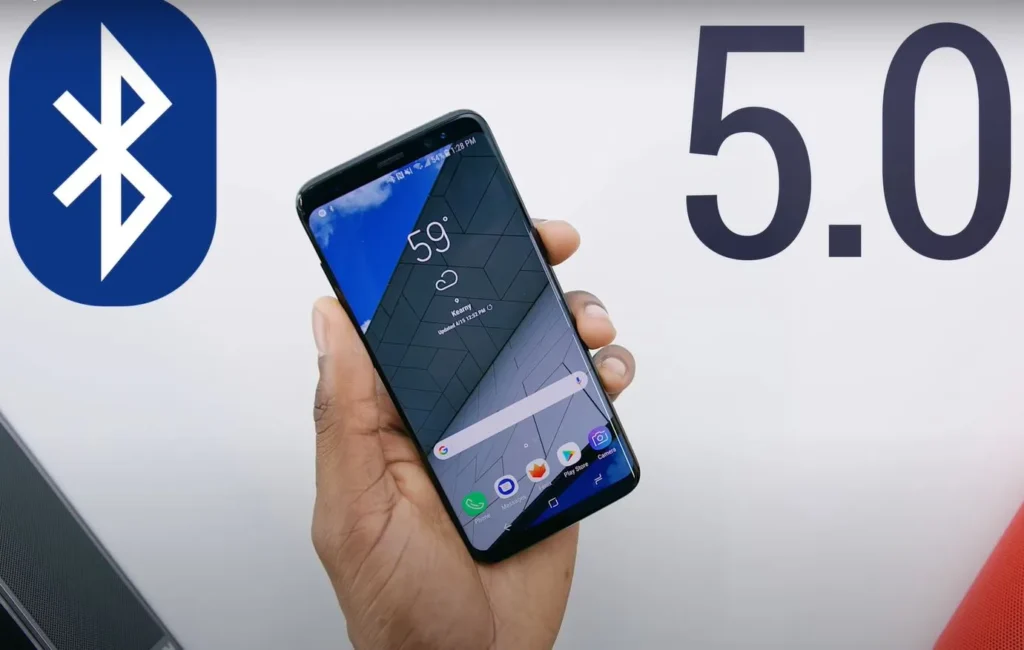This is the reason it’s critical to consider the Bluetooth version of your headphones and phone.

Not many consider something as minor as the Bluetooth version of a smartphone when making their selection. In actuality, it has a significant impact on the quantity of high-quality music you can listen to, the range of your wireless audio transmission options, and how far you can move away from the sound source.
Which Bluetooth versions are available?
Since older smartphones don’t have Bluetooth versions below 4.0, we won’t discuss them here; instead, we’ll concentrate on the more recent technology that most users are likely to come across.
Bluetooth 4.0
It has a range of up to 100 meters (actually up to 50 meters outdoors and up to 10 meters indoors) and data transfer rates of up to 1 Mbps. This version of Bluetooth saw the introduction of Low Energy technology support, which helped to drastically lower the power consumption of devices that used it.
Bluetooth 4.1
Removed interference from LTE networks and brought compatibility with them.
Bluetooth 4.2
Is the biggest technological advancement, primarily addressing privacy concerns.
Bluetooth 5.0

A significant update that quadruples range and doubles data transfer speed. Notably, the Low-Energy (LE) mode has also been enhanced. Most significantly, this was the point at which it became possible to send audio to several devices at once.
Bluetooth 5.1
Can now pinpoint a device’s location with accuracy, enabling more dependable and steady data transfer. The more available channels meant that there were even fewer interferences, which is particularly crucial if you have multiple Bluetooth devices in your home. Additionally, the Bluetooth LE connection’s dependability has increased.
A number of intriguing updates were also made to Bluetooth 5.2
Two that stand out in particular are the enhancements made to the low-power mode and the introduction of the LE Audio standard for audio transmission. By the way, the latter conceals data transmission capabilities over LE, plus a new LC3 codec, Auracast broadcasting technology, and Multi-Stream.
Bluetooth 5.3
Refers more to minor updates to the technology, but it also enhances connection security and stability.
Why is it crucial to consider the Bluetooth version?
As you’ve undoubtedly noticed, Bluetooth technology continues to advance and adds a plethora of new features. And a lot of them still have an impact on the quality of sound transmission, even if they do so indirectly. For this reason, you ought to select smartphones that have Bluetooth version 5.0, if not 5.2.
The technology’s bandwidth and range have significantly expanded with Bluetooth 5.0. This implies that you won’t have to stop listening to the music in order to enjoy higher-quality audio and to move farther away from the source of sound.
Despite being present in Bluetooth 4.0, Bluetooth 5.1 saw the full realization of Low Energy technology. Thus, it’s critical that your phone and headphones support the newest technology if you want them to last as long as possible.
Bluetooth 5.0 and later versions allow you to stream audio to multiple headphones at once. When listening to music together at home or in public, this is helpful. Take the very reasonably priced Lenovo Thinkplus Live Pods XT81, for instance.
A new codec called LC3, which debuted in Bluetooth 5.2, is expected to replace the well-liked, low-cost SBC models soon. Not only will this enhance the sound quality, but it will also make the headphones and phone more energy-efficient, allowing you to listen to your music for longer. Especially considering that headphones that support Bluetooth version 5.2 and higher can be highly affordable. For a few thousand rubles, for instance, you can purchase LG Tone Free FP9. Purchasing phones and headphones with Bluetooth version 4.0 or less is definitely not recommended. LTE compatibility and interference prevention were introduced in Bluetooth 4.1 alone, enabling wireless modems on all smartphones. It’s unlikely that using the technology will be comfortable without that.
What you should think about
All Bluetooth standards are backwards compatible, which is the most important thing to keep in mind. This implies that the capabilities of the entire system will be restricted to the latter if your headphones can only support Bluetooth 4.0 but your smartphone supports the most recent version of the standard, 5.3. The audio source and receiver must both support modern technology for you to fully benefit from it.